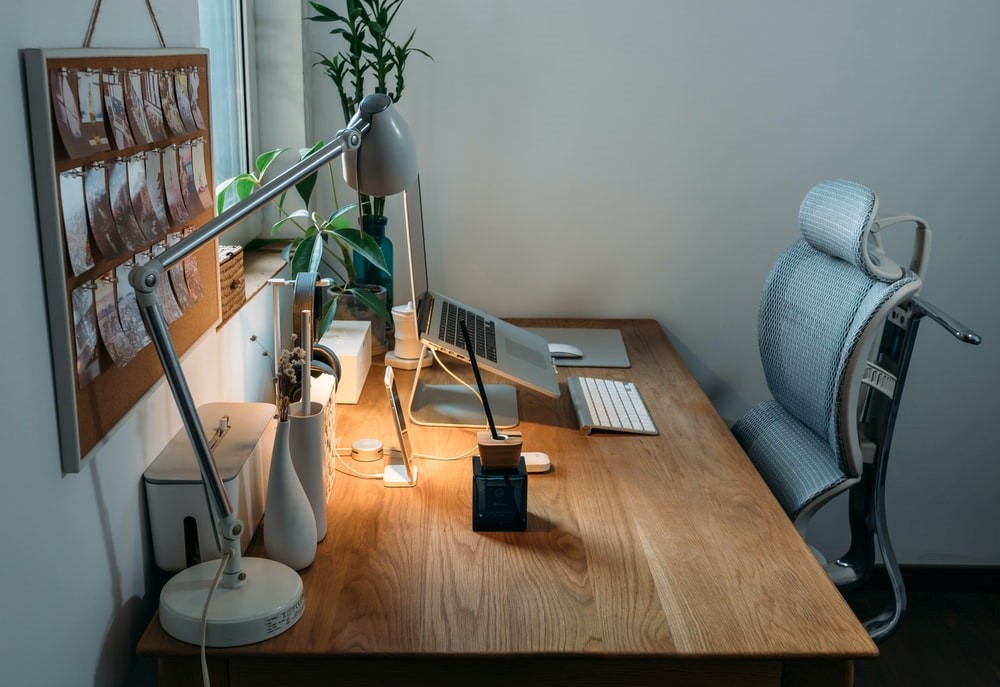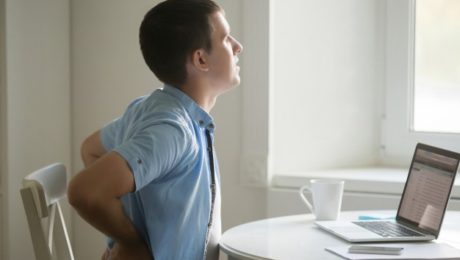As people transition to working from home during the COVID-19 lockdown, there’s been a global increase in people living sedentary lifestyles.
While an office environment sometimes necessitates frequent movement, an at-home work environment can be a lot more static. Most employees remain seated in their home office chair for hours on end.
This new sedentary lifestyle can cause damage to the spinal column or vertebra, which can, in turn, cause lower back pain. Prolonged sitting can weaken the structure that holds the spine in place, resulting in mild lower back pain.
If left undiagnosed and untreated, the condition may escalate into chronic lower back pain that restricts mobility and flexibility. Over time, the person may be unable to carry out routine tasks that require specific movements.
While people with a sedentary lifestyle are more susceptible to developing lower back pain, the condition can also affect individuals on the other end of the spectrum. Analogous to limited movement, improper or excessive movement like when you exercise too hard or too much also increases the chances of developing lower back pain.
If you’ve been struggling to find the right balance during the ongoing lockdown, we’ve rounded up five ways to prevent lower back pain while working from home.
1. Strengthen Your Musculoskeletal System with Regular Exercise
 The musculoskeletal system lends the body much-needed support, form, structure, stability, flexibility, and movement. The complex system comprises bones, ligaments, tendons, muscles, cartilage, joints, and bursae.
The musculoskeletal system lends the body much-needed support, form, structure, stability, flexibility, and movement. The complex system comprises bones, ligaments, tendons, muscles, cartilage, joints, and bursae.
Inadequate or excessive movement can cause long-term musculoskeletal damage to any of the components of the spine, inducing sharp lower back pain.
Try to avoid this by engaging in low-impact cardiovascular exercises that strengthen your core muscles. We recommend devising a customized exercise plan that includes pelvic tilts, knee-to-chest stretches, partial curls, lower back rotational stretches, and lying lateral leg raises. As you indulge in regular exercise, you’ll notice a reduction in lower back stiffness, soreness, and persistent aches.
Consult professionals for an individualized exercise or a physical therapy plan that suits your lifestyle, age, and weight.
Pro tip: Take careful measures to avoid going overboard. Click here for a guide that will prevent overtraining.
2. Switch to an Ergonomic Home Office Chair
 While some of us have invested in a high-quality home office chair, many of us are making do with living room sectional sofas, uncomfortable chairs, and beds.
While some of us have invested in a high-quality home office chair, many of us are making do with living room sectional sofas, uncomfortable chairs, and beds.
If you haven’t created a proper work station, it may be time to take that project on while your lower back is still in good shape.
According to research, inadequate lumbar support is one of the biggest causes of lower back pain and stiffness. Uncomfortable sitting arrangements shorten hip flexors and damage the spinal cord. Over time, excessive pressure on the discs in the lower back may cause a throbbing sensation that extends along the back.
A high-quality ergonomic chair will support your lower back by aligning with the natural curve in your spine.
3. Protect Your Back While Lifting Objects
Improper lifting and bending can wreak havoc on the lower back, thereby inducing and worsening pain. Eventually, it may develop into a chronic back disorder.
Use proper lifting techniques to maintain strong back support, flexibility, and energy. Instead of bending your back, bend at your knees and pivot your hips to pick something up when doing chores.
We also recommend avoiding rigorous tasks that require concurrent bending, lifting, and twisting. The pressure can cause long-term damage to the lower spine and restrict flexibility.
4. Don’t Forget to Get Adequate Rest
 According to research, inadequate sleep increases the pressure within the discs in the lower back by 240%.
According to research, inadequate sleep increases the pressure within the discs in the lower back by 240%.
While you may feel compelled to spend a little extra time catching up on your favorite show late at night, it may be best to resume the festivities the next day.
We recommend getting 7–8 hours of sleep each night to allow your spinal column to heal and regenerate. In addition, maintain a good sleeping posture to prevent causing damage to the structures that hold the spine in place overnight.
5. Improve Your Overall Health
While ensuring proper movement, sleep, lumbar support, and exercise is essential for preventing lower back pain, it’s equally important to make your overall health a priority. Neglecting the basics like diet can put you at great risk of developing chronic back pain that inhibits functionality and accessibility.
Switch to a nutrient-laden, unprocessed, and unpackaged diet to maintain a healthy body mass index (BMI).
 According to a recent study, 47.4% of patients with a healthy BMI experienced less back pain compared to 72.8% of patients with an unhealthy BMI. Follow an anti-inflammatory diet rich in fruit, vegetables, whole grains, and pulses (beans, peas, and lentils). Additionally, cut down on consuming foods with a high glycemic index—especially junk food and fast food.
According to a recent study, 47.4% of patients with a healthy BMI experienced less back pain compared to 72.8% of patients with an unhealthy BMI. Follow an anti-inflammatory diet rich in fruit, vegetables, whole grains, and pulses (beans, peas, and lentils). Additionally, cut down on consuming foods with a high glycemic index—especially junk food and fast food.
We also recommend reducing and eventually stopping smoking, which restricts the delivery of nutrient-laden blood to the spinal discs, thereby worsening lower back pain.
If you’re still struggling to prevent persistent lower back pain, let the team for neurosurgery Houston at Houston Neurosurgery and Spine help. As one of the leading team of neurosurgeons and spine specialists in Houston, we utilize state-of-the-art technology and minimally-invasive techniques to offer the latest in back and spine treatment Houston.
If you’re suffering from the symptoms of lower back pain, contact us to schedule a consultation with our team of board-certified neurosurgeons in Texas.
Long term relief from back pain is possible. Let us help. For more information, call 832-522-8500.

